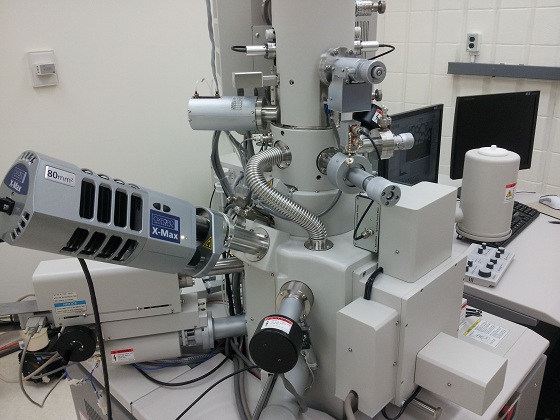SEM/EDS: Hitachi Su-70 Schottky Field Emission
Scanning Electron Microscope (SEM/EDS)
The Scanning Electron Microscope/ Energy Dispersive Spectrometer (also termed SEM/EDXA) facilities at Lakehead University are used by a variety of departments including Anthropology, Biology, Chemistry, Engineering, Forestry, Geology and Physics. Training courses are available for honours and graduate students who require the instrument for their projects. The instrument is invaluable for examinations of microscopical structures including many biological and chemical materials and combined with its ability to measure elemental composition from areas as small as a few microns, it is an important tool for solving many industrial problems.

Equipment
Hitachi Su-70 Schottky Field Emission SEM
Resolution is 1.0nm @15kv/ 1.5 nm at 1 kv
Stage size is 110mm. Analytical working distance is 15mm Includes:
- Oxford Aztec 80mm/124ev EDX
- Specimen exchange airlock
- Gatan Mini CL (185nm-850nm)
- STEM detector
- Below the lens solid state 5 segment BSE detector
- Column faraday cup with HTC current monitorLiquid nitrogen based anti-contamination device
Sample Preparation:
Powders:
Only a few milligrams are needed. These can be mounted unto the a SEM stub (a 1 cm disk) by sprinkling onto double-sided carbon tape. If the powder cannot be mechanically removed, the tape can be pressed against the area of interest on-site and returned to the laboratory for analysis.
Rocks:
Polished thin sections are required. These can be prepared by the Geology Departments Thin Section Laboratory for a fee. They also require coating with a thin layer of carbon before analysis.

